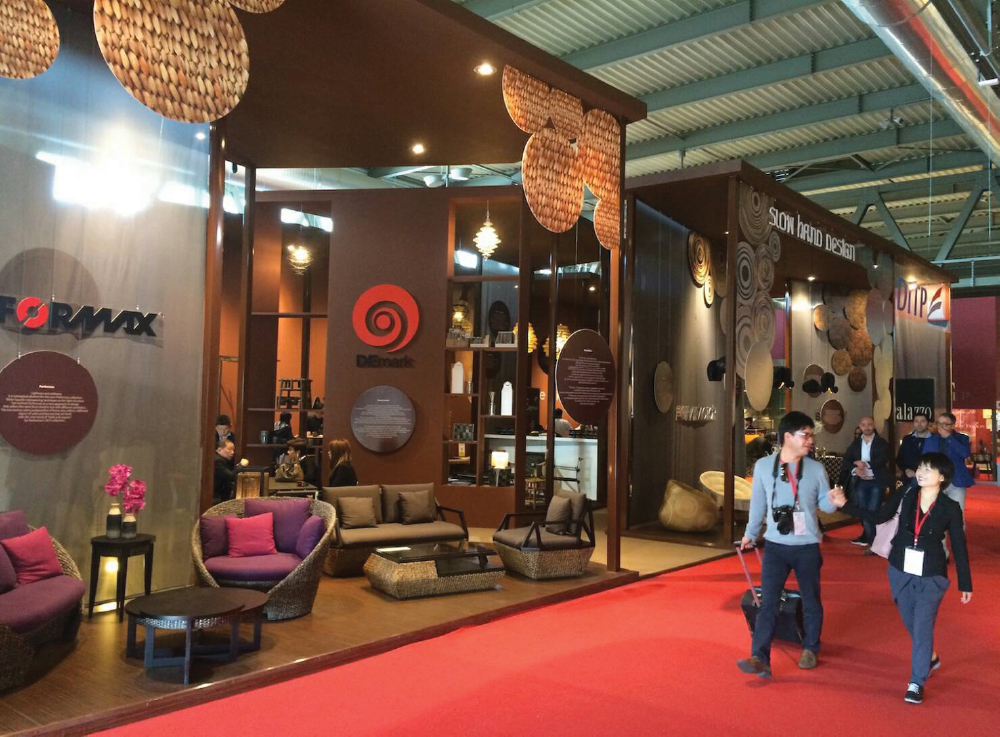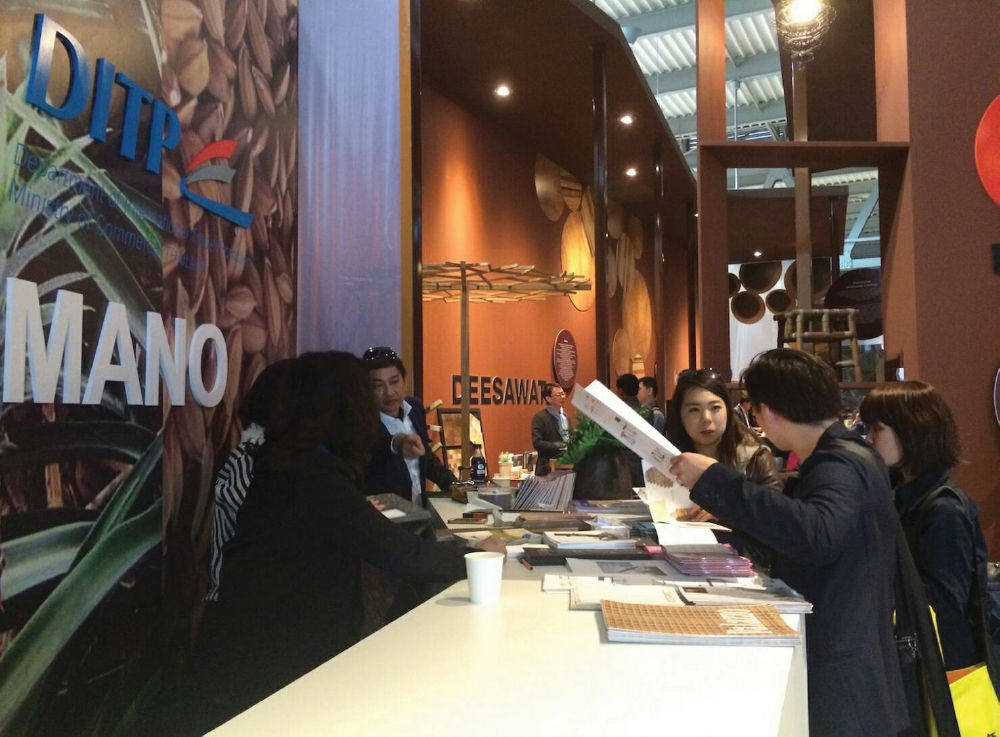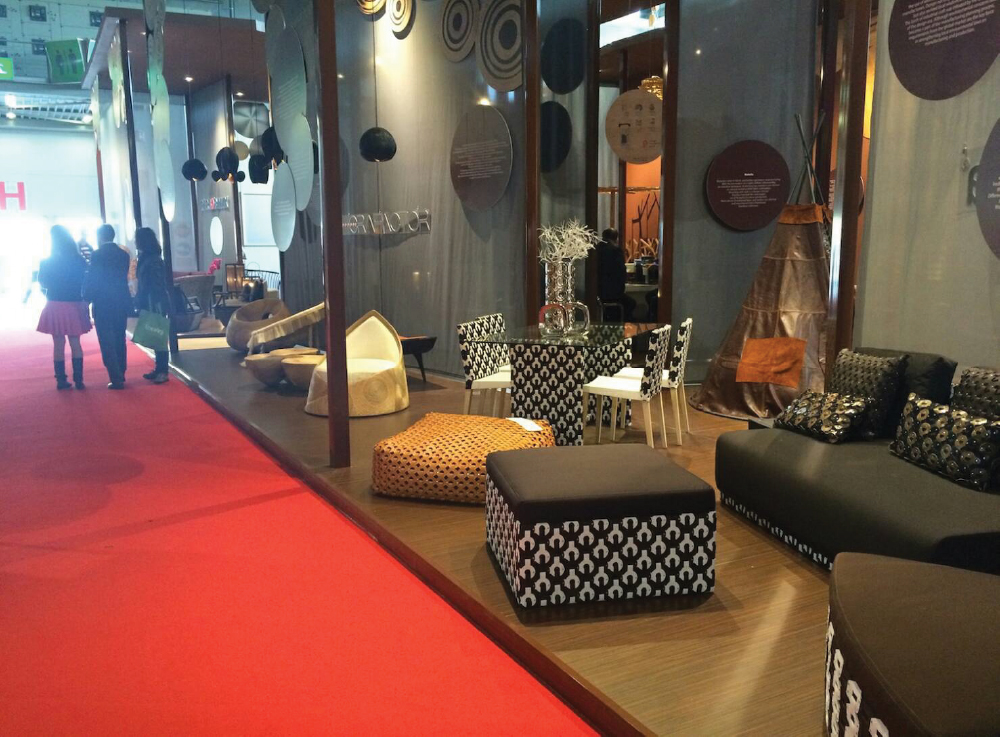Slow Hand Design : Eco •a• mano
Supported by: Office of Export Promotion Activities and Thailand Institute of Design and Innovation Promotion, Department of International Trade Promotion (DITP), Royal Thai government, Thailand Exhibition curator/design : Eggarat Wongcharit
Manifesto
It has been the 5th consecutive year for Slow hand design to be launched in public although this year, the venue of Sperstudio piu has been changed to Rho, Fiera Milano. From story telling on the grass roots of local wisdom in design in the past to modern Thainess in industrial crafts, Slow hand design has established its brand name across international medias and finally become popular among buyers. For this reason, there is a strong support in terms of brand creation to move Slow hand design product show case to the more compatible venue of marketability.
Therefore, 7 design show cases are highlighted in this show to reflect the other side of Thai design DNA that are rooted to both local craft manufacturing and advanced technological know-how. Nonetheless, more cases of products that concern the industry's environment are displayed together with the 7 Eco a mano showcases to enhance the further development of shifting against sustainable industry. Introduction Thai design industries according to ecological environment Thailand's furniture industries has started since early 1970 when the country's economical policy was shifted from agriculture to massive industrial context. More developments from foreign investors kept pouring into the country as the labor costs were very low.
Many investments from overseas were moved from Europe, the United States and Japan to settle their production with modern machinery. Labors from all over the country were gathered in the industrial zones and local material consumption such as teak woods which was and still is, the country's most valuable industrial products has gradually deteriorated the forestry in Thailand.
The lack of nature's management during the period of original equipment manufacturing (1970- 2000) has completely spoiled the environment. The environmental management was launched early in 1990's. The impact of pollution from industries has created awareness to the public. More Environmental concerns was raised as an issue of the country's sustainable development campaign. Meanwhile, many nature's protection campaign was launched to invoke public awareness on environmental pollution caused by the industries.
To help preserve Thailand’s natural forests and provide a sustainable wood alternative, the government started collaborating with the Thai Furniture Association and other related industries to improve and sustain the environments.
Economical materials such as rubber wood was first introduced to local manufacturers. Harvestation of replacing materials for furniture industries has shifted furniture industries with different industrial alternatives in order to conserve teak forestry. replace teak wood harvesting, and marketing. In 1996, the Tom Yum Kung economical effect has drastically given an impact to the country. Designers and architects sacked from many closed down architectural and design firms are gathered as a group.
With the support of Department of International Trade Promotion who seeked for potential exported product design developers, Design and Objects association has gathered its members and presented export design product collection that has its own identity in design.
Many alternative materials such as Water hyacinth, vines and etc. that consume less of the environments meanwhile reflecting its local wisdom of handicrafts were introduced to both local and international public with different dimension of design and production. After the first design phenomenon has occurred, the era of Design has opened up its alternatives on material uses to other local manufacturers.
Design has provided different choices of material uses meanwhile, local wisdom of crafts techniques are revived. The invention of industrial craft was initiated together with the development of design. Environmental concern has become an awareness in the manufacturing process, at the same time, requirements from global market are the key to force and strengthen environmental laws on manufacturing and production.
Design by ecology
Natural materials on Thai design Relying on environmental materials, villagers in Thailand survive their living with wisdom that creates range of domestic designed as living tools to utilize in fishery, farming, etc. From fish traps to toys, vernacular creations are truly an outcome of local wisdom. Nowadays, designer has adapted the same base of handcrafted techniques with lesser approach on both forms and textures, the outcome of new design invention has proven its qualitative liability and its good design at global scope.
Modern design from Thailand made from natural fibers and other organic products has proven its reputed design and quality. The exportation of design products from Thailand has brought along income to the village's artisans. Exported industrial crafts that consume less toxic materials has given a prove to pubic that there is always a choice to deteriorate the least of nature as long as there is creativity. Turning waste into taste For many generations, the wisdom of villager's crafts has been passing within the family's members and further developed into many forms of functionality and aesthetics. The by- products of what can be found in the same environment are adapted with wisdom for the reason of entertainment or surviving in their daily living routines.
To date, the production of craft industries when comparing to massive production, industrial craft probably consumes more of labor intensive but along the process of production, it consumes lesser toxicated materials and yet open to many consecutive technical experimentations as it has no such rigid bounder as any advanced massive technology that is settled as a fixed routine of production. When the nature of craft production techniques are combined with recycled materials, many cases of material inventions are created and reflected with diversified aesthetics.







